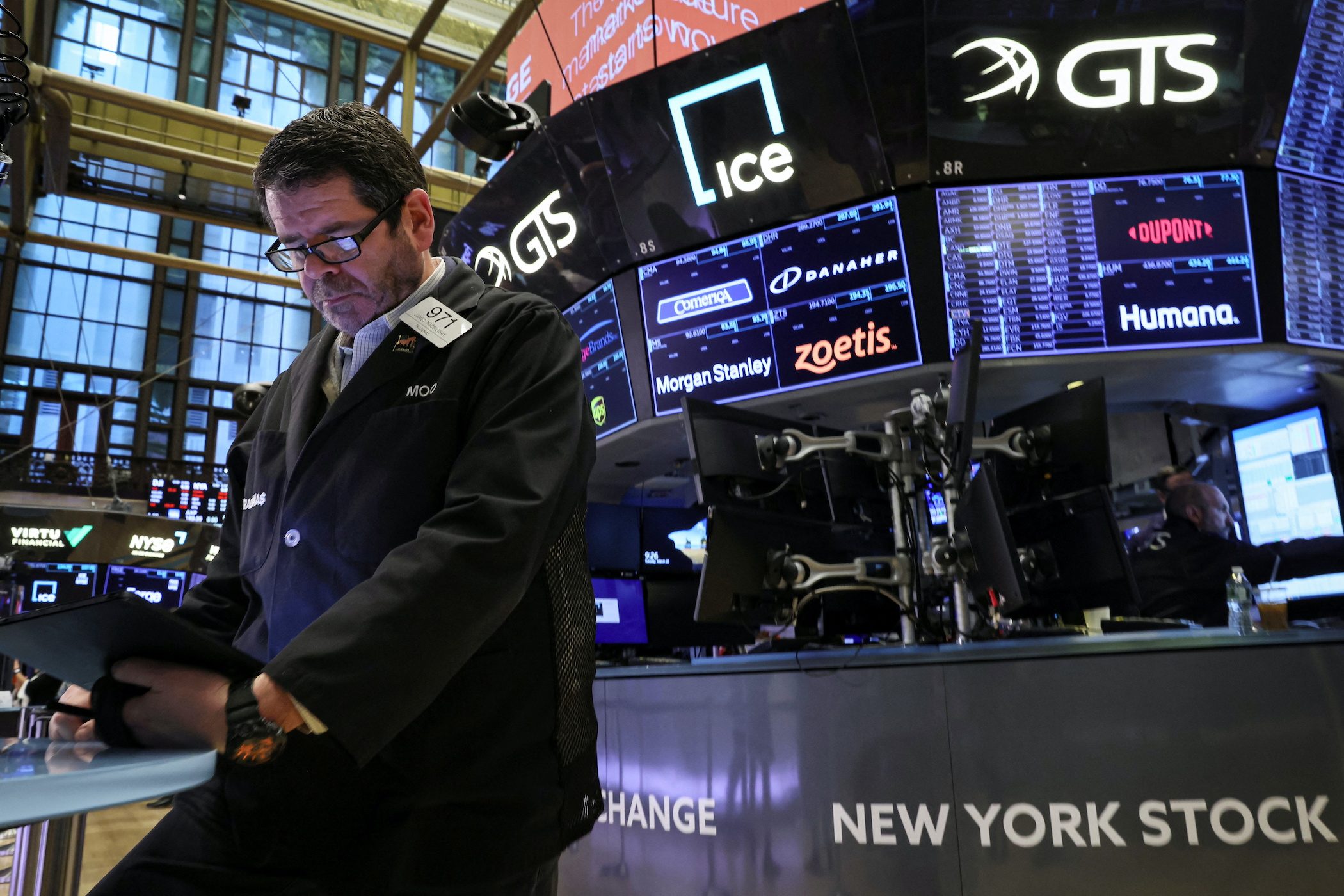SUMMARY
This is AI generated summarization, which may have errors. For context, always refer to the full article.

Wall Street pushed stocks and Treasury yields down on Wednesday, March 23, after both had powered higher earlier in the week as investors took in the strength of the economy and hawkish comments from US policymakers.
Two-year US Treasury yields have risen sharply so far in March and were set for their biggest monthly jump since 2004. Investors have been relatively sanguine about the implications of higher yields on stock market valuations, with many choosing to buy back in after a bruising few months for equity prices.
That narrative took a pause on Wednesday as major US equities indexes declined more than 1%. The Dow Jones Industrial Average fell 448.96 points, or 1.29%, to 34,358.5; the S&P 500 lost 55.41 points, or 1.23%, to 4,456.2; and the Nasdaq Composite dropped 186.21 points, or 1.32%, to 13,922.60.
European stocks also fell about 1%, with a pan-European equity benchmark hitting a new one-month high in early London trading before falling back as traders took profits. MSCI’s broadest gauge of world stocks declined 0.9%.
Investors were still trying to make up their minds about interest rates and stocks.
“Although there is widespread criticism, it’s too early to take the view that the Fed won’t be able to negotiate the fine line of reducing inflation without derailing growth,” said Mark Haefele, chief investment officer, UBS Global Wealth Management.
“Given a higher degree of uncertainty, rather than make a directional play on stocks moving higher, we prefer selected overweight and underweight positions, yielding an overall neutral allocation to equities.”
Bond sell-off
The most eye-catching moves recently have been in the bond market, although there was some reversal on Wednesday. The 2-year US Treasury yield, which typically moves in step with interest rate expectations, was down 4.8 basis points at 2.107%. The yield on 10-year Treasury notes was down 7.6 basis points to 2.301%.
The sharp rise in short-dated yields has flattened the gap between 2- and 10-year US yields to its lowest levels since the coronavirus pandemic hit global markets in March 2020. An inverted yield curve is widely seen as a predictor of future US recessions.
JPMorgan market strategists wrote in a recent note that markets have rebounded recently because investors are “looking through the hawkish Fed and ominous signal” from the rates curve flattening.
“We believe this is warranted given strong economic fundamentals, our expectation the [2-year and 10-year Treasury] curve will stay positive this year, and moderating risks of large energy supply disruptions,” they wrote.
The economics conversation came as Western leaders began gathering in Brussels to plan more measures to pressure Russian President Vladimir Putin to halt his month-old Ukraine campaign; Putin, in response, said Moscow planned to switch its gas sales to “unfriendly” countries to roubles.
Oil prices rose in volatile trading on Wednesday, supported by disruption of Russian and Kazakh crude exports. US crude recently rose 4.71% to $114.42 per barrel and Brent was at $121.37, up 5.1% on the day.
Gold prices also gained on Wednesday as investors looked to shield against soaring inflation and uncertainty caused by events in Ukraine, with elevated US bond yields capping gains in non-interest-bearing metal. Spot gold added 1.3% to $1,946.44 an ounce.
Currency market activity continued to be relatively subdued, confirming the lack of clear directional trends.
Against the US dollar, the yen was up about 0.25% by 2000 GMT/4 pm ET, but held around 121 yen after Bank of Japan Governor Haruhiko Kuroda said it was premature to debate the exit from ultra-loose monetary policy.
The euro and sterling fell about 0.25% and 0.4% respectively against a broadly stronger dollar. – Rappler.com
Add a comment
How does this make you feel?
There are no comments yet. Add your comment to start the conversation.